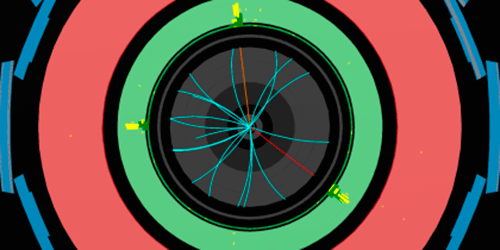LHC Data Might Reveal Nature of Neutrinos
As recognized by this year’s Nobel Prize in physics, evidence now points to neutrinos having mass (see 7 October 2015 Focus story). But this opens up new questions about why the neutrino mass is so much smaller than other particle masses. One solution is to assume that the neutrino is a different kind of particle—one that is its own antiparticle. A new theoretical study shows that observations of W boson decays at the Large Hadron Collider (LHC) in Geneva could potentially uncover the antiparticle nature of the neutrino.
Electrons, protons, and other fermions are Dirac particles, meaning they have a separate antiparticle with the same mass, but opposite charge. Neutrinos could be Dirac particles, but because they have no electric charge, they could also be Majorana particles, for which particle and antiparticle are the same thing. Such Majorana models are attractive because they offer a fairly natural explanation for the extremely small neutrino mass.
Experiments looking at extremely rare nuclear decays are trying to detect a possible Majorana or Dirac signature of the neutrino. To widen the search, Claudio Dib from Santa María University in Chile and Choong Sun Kim from Yonsei University in Korea propose looking at W boson decays. They considered decays that result in specific combinations of electrons, muons, and neutrinos. These decays have yet to be observed, but they are predicted in theories involving hypothetical sterile neutrinos. Taking into account current limits on the existence of sterile neutrinos, the team predicts that the next runs at the LHC could produce as many as a few thousand of the desired W boson decays. If this count is correct, then physicists should be able to discriminate Majorana from Dirac neutrinos by the shape of the energy spectrum of the outgoing muons.
This research is published in Physical Review D.
–Michael Schirber





